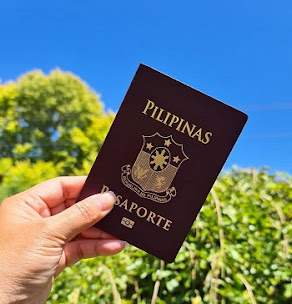Summer in Japan is a vibrant season filled with unique experiences that can't be found at any other time of the year. It's the season of festivals, from parades to period costumes, fireworks, foods, etc., where the streets come alive with colorful processions and traditional music.
If you are visiting Japan this summer in July, best to take notes and save these festivals and events to your calendar. Aside from celebrating the annual Tanabata Festival, these festivals will surely be an enjoyable experience for you and your whole family, at any age!
1. Aizen Festival
The Aizen Festival is held in June at Aizendo Shomanin Temple in Osaka's Tennoji Ward. It's famous as Japan's oldest summer festival and dates back some 1,400 years.
Aizendo Shomanin Temple, also affectionately known as Aizen-san by the local residents, is a spot where visitors come to pray for good health in the summer—historically a time of the year when epidemics spread easily.
The festival highlight is a traditional event known as the Hoekago Parade. During this event, young women (Aizen musume) dressed in summer kimonos called yukata, sit on a seat in a box (kago) and are carried by a group of people by means of two poles. The parade winds its way through the crowd in gorgeous fashion while people call out for business prosperity.
When: Sunday, June 30 to Tuesday, July 2
Food Stalls: Many stalls are typically set up on the temple grounds.
Fireworks: Not held.
Entry: Free
The parade will be held on the first day of the festival and depart from Tennoji Park at noon. It will make its way to Aizendo Temple where the hoekago is raised up and down in a special ceremony that commences from 1 p.m.
For details please see the official website (Japanese).
Location: Osaka - Tennoji Park, and Aizendo Temple
2. Mt. Fuji Opening Fireworks Festival
To mark the opening of Mount Fuji climbing season, known as yamabiraki in Japanese, there will be fireworks on the shores of Lake Kawaguchiko.
These are the earliest fireworks of the summer season in Yamanashi. While not super explosive (there are only around 2,000 fireworks lasting 30 minutes), it will be quieter than the massive fireworks festival held in August.
TIP: The best spot to see the fireworks with Fuji in the background is around Ubuyagasaki Shrine after crossing Kawaguchiko Bridge or Oike Park.
When: 6th July 2024 at 10:00AM to 8:00PM / Fireworks starts at 8:00PM
Entry: Free
3. Ito Matsukawa River Tub Riding Race
 |
| Image: FB/Home of Mt. Fuji-Shizuoka |
This quirky race held since 1956 sees individuals in barrels paddle down the Matsukawa River in Ito City on the Izu Peninsula.
Participants, eager to win, set sail in large tubs armed with nothing but their dignity and two hand paddles. Getting wet is expected as they speed down the 400-meter course. To ensure the level is nice and high, extra water from the local dam is released.
Teams from around the world enter to compete in this competition. (In Italy, they also sometimes race in washtubs.) You must pre-register to enter the race and can do so on the official site (although only in Japanese). Spectators can watch from the sidelines. For more details, visit the official website.
When: 7th July 2024 | 09:30AM to 12:30PM
Entry: Free
How to get there:
The starting point at Ideyu Bridge is around a 10-minute walk from Itō Station. To get to Itō from Tokyo Station, take the Odoriko train for around 1 hour and 30 minutes. An alternative and cheaper option is to get the Shinkansen to Atami Station and then change to the Itō Line.
4. Ise Shrine Dedication Fireworks Festival
Take a seat along the Miyakawa River in Ise for one of the three biggest fireworks festivals in Japan. Take a seat along the Miyakawa River in Ise for one of the three biggest fireworks festivals in Japan. Around 7,000 fireworks will be launched and pyrotechnicians from across the country attend to show off their skills. This is a competition, so you’ll be sure to see their best efforts!
When: 13th July 2024
Entry: Free
The fireworks will shoot off from 7:15 p.m. until 8:50 p.m. While the fireworks will go ahead if it rains, if the weather turns stormy then the fireworks will be postponed to September 7 (and then Sep. 8).
How to get there:
There will be a shuttle bus from Ise-shi Station. It takes around 10 minutes.
5. Hakata Gion Yamakasa
 |
| Image: FB/Menbei |
Hakata Gion Yamasaka is a festival with an 800-year history that features fundoshi — (that ever-popular festival garment) clad men racing elaborately decorated floats that weigh in at one ton.
Registered as a UNESCO intangible cultural heritage, it originated 800 years ago when an epidemic was raging in Hakata. A monk prayed to disperse the epidemic while riding on a wooden float and spreading water around the area.
The festival lasts for eight days, during which hundreds of energetic men run around Hakata carrying floats called yamakasa. You can see the best part of the festival on the last day, oi-yamakasa. Here, teams of men race over 5 km with a yamakasa float starting at 4:59 am. You will surely be overwhelmed by the dynamic way they carry the float.
The event is one of Fukuoka‘s largest with approximately one million spectators expected to observe the festivities. Check the event schedule on its official website.
When: 1st of July to 15th of July 2024
The main processions take place on July 10, 11, and 14.
Entry: Free
How to get there:
You can watch the Hakata Gion Yamakasa around Kushida Shrine. Our recommendation is to go from Hakata Station, the closest train station to Kushida Shrine.
Taking the Nozomi bullet train (shinkansen) toward Hakata from Tokyo Station, you can get to Hakata Station without transferring. It takes about five hours, and the fare is 21,810 yen for a non-reserved seat. It is a short 15-minute walk from Hakata Station to Kushida Shrine.
6. Mishima Skywalk Hydrangea Festival
Flourishing 13,000 hydrangeas blooms across beautiful countryside backdrops with Mt. Fuji Vistas, the Mishima Hydrangea Festival is the place to be this June and July! Enjoy adorable and delicious hydrangea motifs desserts, scenic views along monumental bridges, photography competitions, and more!
Mishima Skywalk is a pedestrian bridge in Mishima City, Shizuoka Prefecture, measuring 400 meters in length and offering panoramic views of the surroundings and Mt. Fuji.
This summer, the Mishima Skywalk is set to dazzle visitors with its Hydrangea Festival, a celebration of natural beauty that promises to captivate all, showcasing beautiful blooms alongside forest trails and Mt. Fuji views!
When: Today until 15th July, 2024
Running until July 15, the Mishima Skywalk Hydrangea Festival 2024 unveils a breathtaking display of 13,000 hydrangeas, with 205 varieties across a sprawling 7,000m² forest haven.
Celebrating this botanical marvel, guests can wander through a corridor of blooms that includes unique varieties like Skywalk, Haou, and Natsuzora, unique to the region. Check the official website for a detailed schedule.
Mishima Skywalk
Business hours: 9:00 - 17:00 (subject to change depending on events and weather)
Location: 313 Sasahara Shinden, Mishima City, Shizuoka Prefecture
Admission fee: 1,100 yen for adults, 500 yen for junior and senior high school students, 200 yen for elementary school students (excluding events and busy periods)
Mishima Skywalk Hydrangea Light-up
Dates: June 21 - 23, June 28 - 30, 2024 *Limited 9-day event from July 5 - July 7
Time: 17:00 - 20:30 (last entrance 20:00 / sundown usually around 19:00)
Admission fee: 1,100 yen for adults, 500 yen for junior and senior high school students, 200 yen for elementary school students
How to get there:
20 minutes by car from JR Mishima Station. From Tokyo, it takes about 60 minutes (by Shinkansen), or about 80 minutes (by car).Approximately 100 minutes from Nagoya Station (Shinkansen)
7. Hita Gion Festival
Experience the ultimate Japanese summer celebration with Gion in Hita! For almost 300 years, the Hita Gion Festival has been a time-honored tradition of prayer and good luck. Be mesmerized as towering floats, reaching heights of ten meters, glide through the historic district of Mameda to the enchanting sounds of flutes, singing, and Gion music. As the sun sets, the floats transform into a surreal spectacle with lanterns illuminating the night sky with a fiery passion. You can also see all the floats gathered at once in front of the JR Hita Station. For more details, check their official website.
Entry: Free
When: 14th - 21st July 2024
8. Miyajima Kangen-sai Festival
 |
| Image: FB/Visit Japan |
Kangen-sai is the largest and greatest annual festival held at the Itsukushima Shrine on Miyajima Island.
Originating in the Heian period, Kangen-sai is a festival in which a portable shrine carrying the gods of Itsukushima is moved between other shrines on the island via a Goza boat. Musicians follow, playing kangen music while moving across the water.
Kangen is a type of Japanese classical court music played on nine instruments including three types of stringed instruments, drums, and flutes.
Visit their official website for the official schedule.
When: Monday 22nd of July 2024
Entry: Free
9. Tenjin Festival
Although this is held throughout Japan, the festival that takes place around Osaka Tenmangū Shrine is the most famous. Touted as one of Japan’s top three festivals, the Tenjin Matsuri has a history of over 1,000 years.
There are two main parts to the festival, one on land and the other on the water. On dry land, there is a procession of 3,000 people dressed in the style of courtiers of the 8th to 12th centuries accompanied by mikoshi (portable shoulder-borne shrines). The water part of the festival takes place when the same 3,000 participants board boats at Tenmanbashi Bridge and sail upriver.
As the sun sets, fires are lit on board the vessels, creating a spectacle for those on the banks. Although they’re lit just for effect now, originally, they were lit for night patrols or fishing. As the darkness descends, there is also a fireworks display.
When: 24th – 25th of July 2024
Entry: Free
10. Yamaguchi Gion Festival
It is one of the three major festivals in Yamaguchi and is a traditional festival that has continued since the Muromachi period.
One of the festival's main attractions is the “Dance of the Heron” which marks the beginning of the celebration. The elegant dance is performed wearing heron costumes and is classed as a Folk Cultural Property by the prefecture. There is a large dance performance involving the city's residents and a mikoshi procession takes place. Check the full detailed schedule here at its official website.
When: 20th – 27th July 2024
Entry: Free
11. Kihoku Lantern Festival
 |
| Image: touroumaturi.com |
The Kihoku Lantern Festival takes place in the port town of Nagashima in Kihoku, Mie Prefecture.
Each year a large, elaborate cloth lantern is set afloat on the harbor in the afternoon. After nightfall, there is a spectacular fireworks display known as the Saiun Kujaku (Rainbow Peacock) as a backdrop to the floating lantern.
From 2 p.m. until the fireworks begin at 8 p.m. there are performances and other entertainment on a stage. For a more detailed schedule, visit its official website.
When: 27th July 2024
Entry: Free
How to get there:
The venue (Kiinagashima Port) is a 15-minute walk from Kii Nagashima Station.
12. Takashi Murakami Exhibition at the Kyocera Museum
Louis Vuitton and Takashi Murakami's Flower Parent and Child sculpture is now exhibited at the Kyocera Museum of Art in Kyoto, Japan. The art installation was first showcased in Tokyo in 2020 and is now featured as part of the museum's Takashi Murakami — Mononoke Kyoto exhibition. The exhibition displays 170 works by renowned contemporary Japanese artists.
The Takashi Murakami — Mononoke Kyoto exhibition is open at the Kyocera Museum of Art until 1st September 2024.
Entrance Fee:
Adults: 2,200 yen (2,000 yen)
University and vocational school students: 1,500 yen (1,300 yen)
High school students: 1,000 yen (800 yen)
Free for junior high school students
and younger *All prices include tax.
*Prices in parentheses are for advance tickets and group tickets of 20 or more
people. ※ Admission is free for persons with a disability certificate and one accompanying person.






































Post a Comment